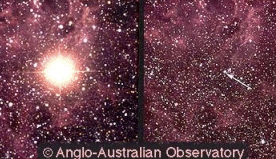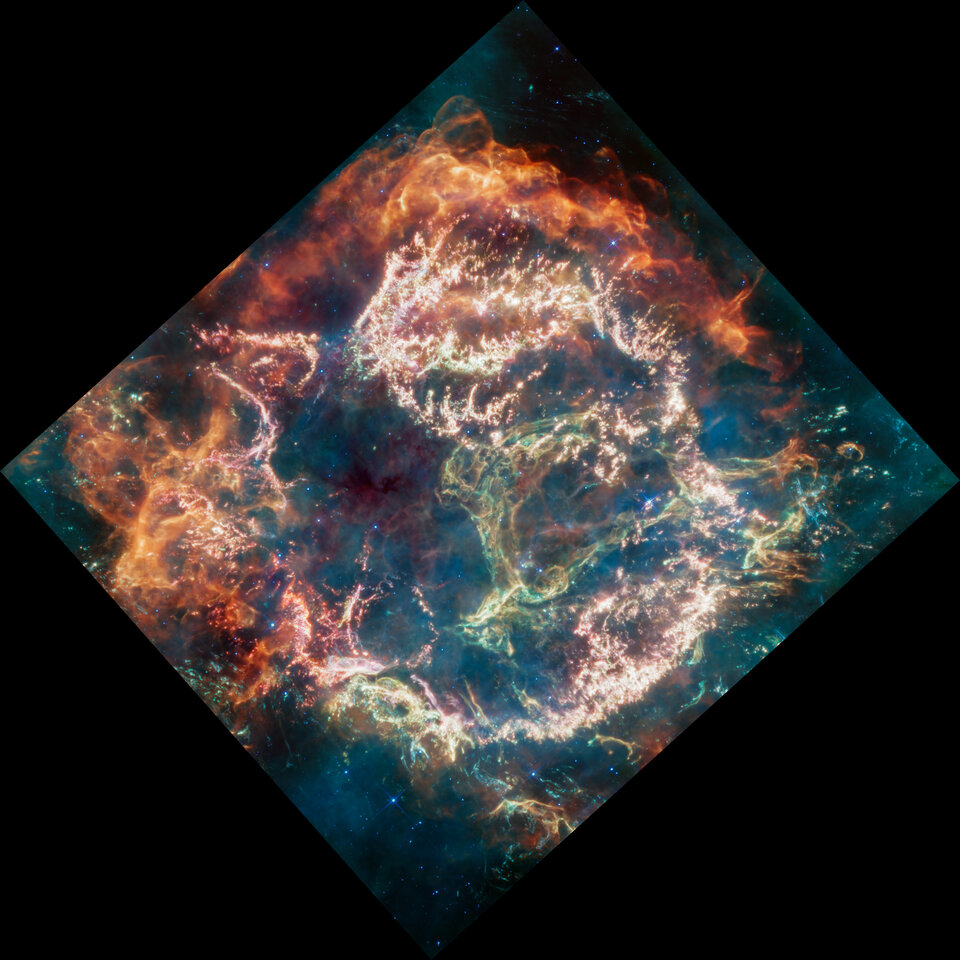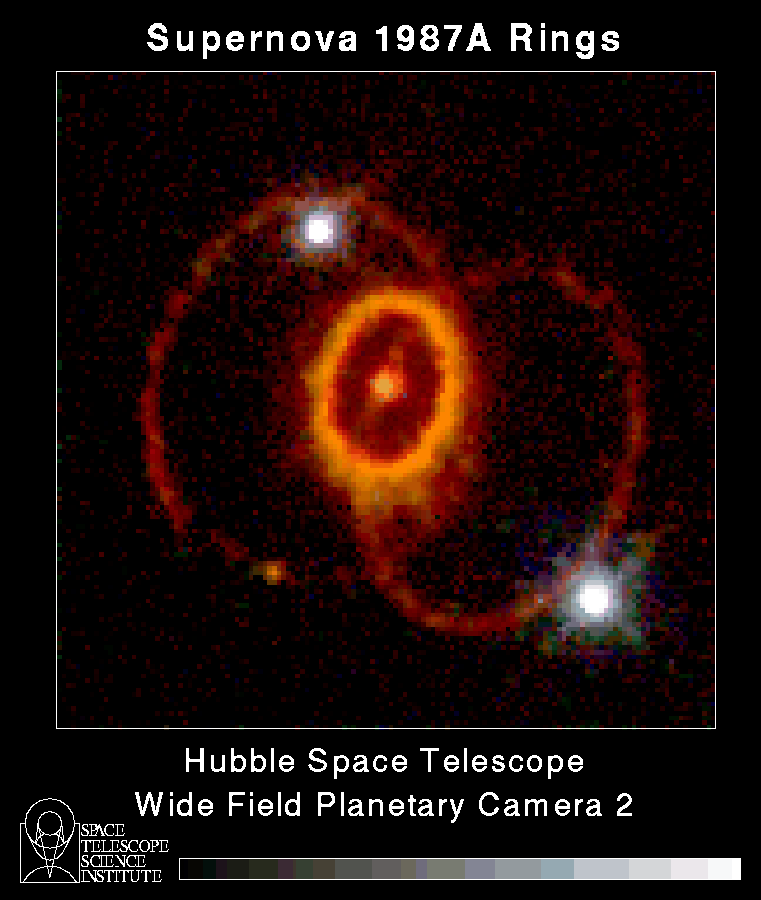Supernova Rates and Historical Supernovas
Supernova Rates
Supernovas are rare. There have only been a
handful "observed" with the unaided eye in our
Galaxy over the last 1,000 or so years. (
These naked eye supernovas are referred to as
Historical Supernovas).
The best guess as to their rate of
occurence is 1 per 40 (± 10)
years in normal galaxies, based on
on studies of external galaxies. Around 85 % of the supernovas
are core-collapse supernovas, Type II supernovas. Based on the
record we are due for a historical supernova.
Historical Supernovas
 |
SN 1987A (click for a CHANDRA Youtube video):
SN 1987A is a Type IIp SN that exploded
in the Large Magellanic Cloud roughly 166,000 years ago but was
detected on Earth only 37 years ago, on 23 February 1987. SN1987A, the last
historical supernova was an atypical supernova in that its progenitor star
was a blue supergiant, not a red supergiant. Consequently,
SN 1987A was fainter than a typical Type II supernova.
SN 1987A is the only historical supernova to have taken
place in the modern technological era.
SN 1987A has been studied over the electromagnetic spectrum from the
γ-ray to the radio, was detected in neutrinos, and, importantly,
happened in a star that had been studied before the explosion, SK -69 202
(Sanduleak -69 202).
|
Name
Type
Date
Absolute Magnitude
Observed by
Constellation
| | | | | |
... |
Ia |
185 |
... |
Chinese |
Circinus & Centaurus |
... |
... |
386 |
... |
Chinese |
Sagittarius |
... |
II-Ib |
393 |
-1 |
Chinese |
Scorpius |
... |
Ia |
30 April 1006 |
-7.5 |
Chinese,Arabs,Japanese,Europeans |
Lupus |
SN 1054 |
II |
4 July 1054 |
-6 |
North Americans,Chinese,Arabs |
Taurus |
... |
... |
August 6, 1181 |
-1 |
Chinese,Japanese |
Cassiopeia |
Cas A (?) |
IIb |
1680 |
... |
not recorded |
Cassiopeia |
Tycho |
Ia |
6 November 1572 |
-4 |
Tycho Brahe |
Cassiopeia |
Kepler |
Ia |
9 October 1604 |
-2.25 to -2.5 |
Johannes Kepler |
Ophiucus |
SN 1987A |
II |
23 Febraury 1987 |
+3 |
Ian Shelton |
Large Magellanic Cloud |
Supernova Remnants |

Cygnus Loop |
99 % of the energy of a Type II SN comes out as neutrinos and around 0.01 % of
the energy comes out as photons (electromagnetic radiation). What happens to
the other 1 % of the energy?
The energy that went into the explosion produces a
Supernova Remnant. When a massive star
explodes, it leaves a remnant of a few times the mass of the Sun;
a large fraction
of the material is thus thrown outward at high speeds. The material as
it sweeps through the surrounding gas, shocks, heats and starts to
radiate producing the nice arcs and rings seen in the pictures. Initially,
the expanding shell is presumably composed of the outer parts of the star
and moves at speeds of 2,000-10,000 km s-1. As the shell
sweeps up surrounding gas, it gets more massive and slows down. Eventually,
it just merges into the background ISM. Typical remnants may live up for up
to 100,000 years (long, but still short on the astronomical time scales).
The Crab Nebula, the
SNR shown in the right mid-panel below as produced by the SN which went off
in Taurus in 1054 A.D. Today, nearly 1,000 years after the explosion the
material (ejecta) is still flowing
outwards at a rate of 1,450 km s-1.In the panel to below left
is shown the SNR known as the Cas A.
The SN which produced Cas A
took place in the 1600s (it has not yet determined exactly when).
In the far right panel is shown the SN1987A SNR. The bright rings are produced
by the collision of the ejecta from the explosion and material which left the
progenitor star perhaps 20,000 years ago.






